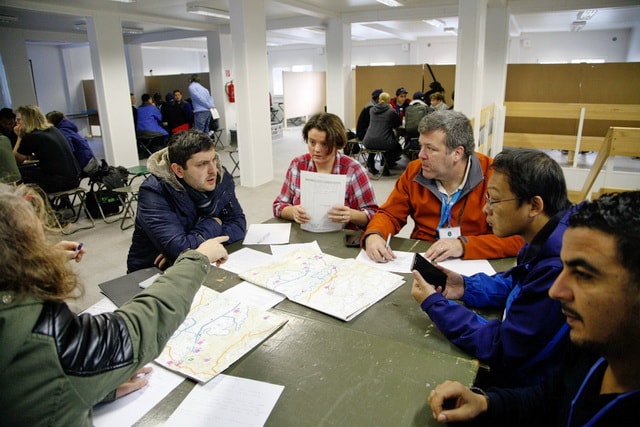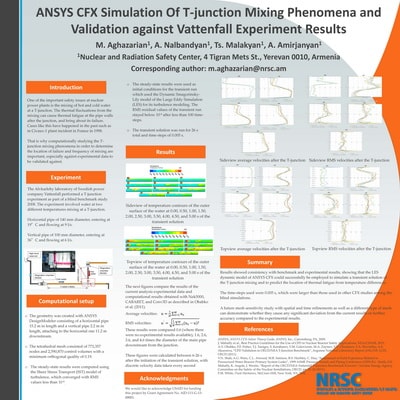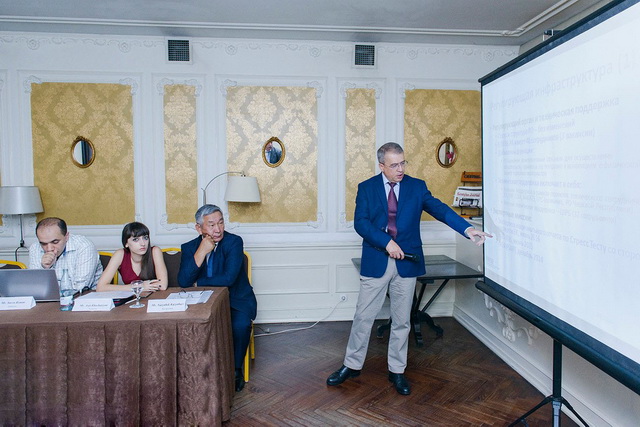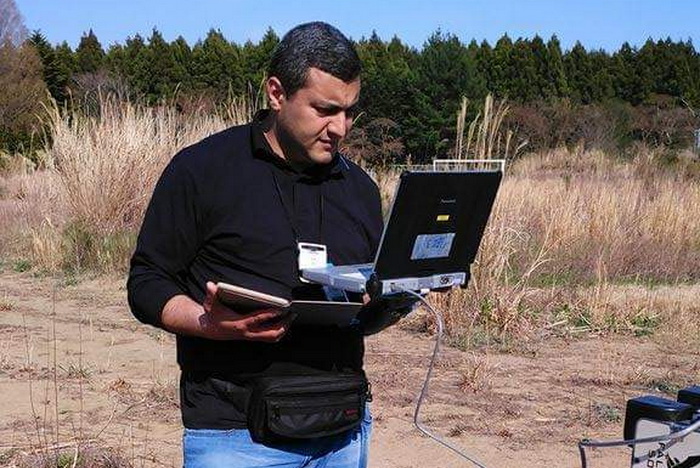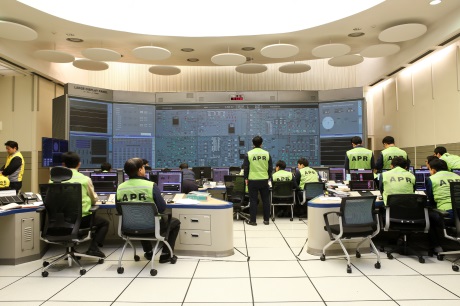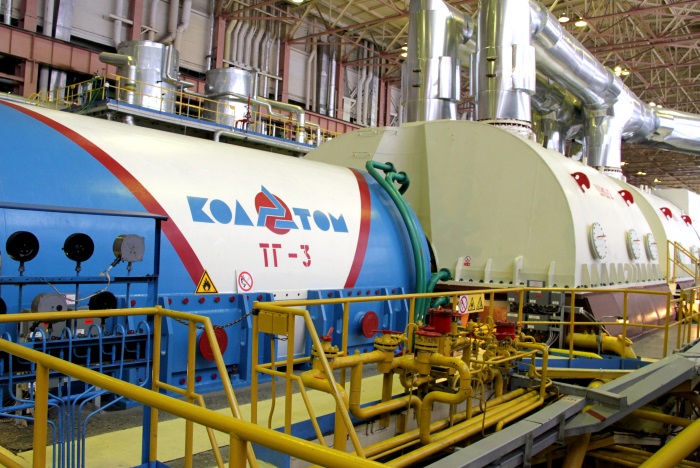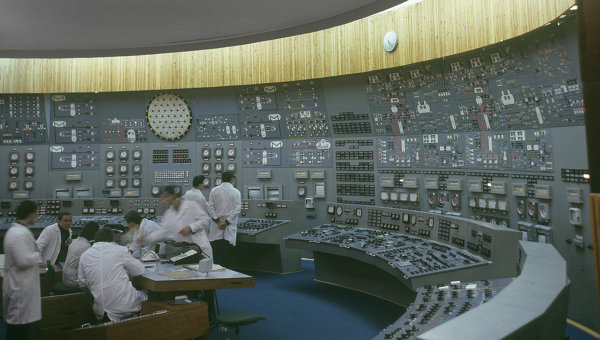NRSC specialist Vahagn Petrosyan has participated in the Third On-Site Inspection Training Cycle Introductory Course (IC-3TC) organized by the CTBTO. The training course was held from 15 to 29 October 2016 in Zvolen, Slovakia. The 80 participants represented more than 50 Countries. During the training course, have been considered procedures, time frames of the Inspections and responsibilities and rights of the Inspectors Team in a case of possible nuclear test explosion. The second part of the training course has been conducted in the Special Forces Training Facility Lest, where the main possible indicators of nuclear test explosion have been investigated during the field exercises.
NRSC specialists Hovhannes Hovhannisyan and Mher Mantashyan participated in the ANSYS CFX advanced training course which took place at the Budapest University of Technology and Economics on 3-28 October 2016. The training course was organized within the support of Brookhaven National Laboratory (in the framework of US NRC and ANRA cooperation agreement) and was aimed to provide deep knowledge in the field of ANSYS CFX code. In the framework of training NRSC specialists modeled WWER-440 reactor’s pressure vessel and fuel assembly. Using developed models were performed calculations.
The NRSC mobile response group participated in the emergency response exercise at Bavra checkpoint of the Armenian-Georgian border from 26 to 29 September 2016. The exercise was organized by the embassy of United States in Armenia. During the exercise, the NRSC experts have conducted the identification of radioactive sources, localization of contaminated areas and objects.
NRSC participated in the Computational Fluid Dynamics for Nuclear Reactor Safety 6 (CFD4NRS-6) workshop held in MIT, Cambridge from September 13-15, 2016. The workshop is organized by OECD and NEA and the theme of the last one was uncertainty analysis of computational fluid dynamic applications related to nuclear safety. NRSC simulation of a T-junction mixing problem was presented as a poster titled ANSYS CFX Simulation of T-junction Mixing Phenomena and Validation against Vattenfall Experiment Results. See Poster
The U.S. NRC organized the sixth workshop on Radiation Sources Regulatory Partnership program. The workshop was held from 5 to 7 September in Tbilisi, Georgia. Participants represented the following countries – Armenia, Azerbaijan, Czech Republic, Georgia, Lithuania, Kyrgyzstan, Moldova, Tajikistan, Ukraine, Uzbekistan. Representatives from AdSTM/Qi Tech and U.S. NRC have attended the meeting. Participants presented the status of finished and current work and accomplishments in improving state control of radiation sources and X-ray devices during the past years within the U.S. NRC assistance program and outside of the program. During the meeting, NRSC presented the new features of ARIS v2.2 and NUCMAT v3.1, how to install and uninstall the new version of the software and how to restore the database from older versions. All new features have been demonstrated to the participants. In the workshop program was included also the presentation about the upcoming version of ARIS (v2.5). New features planned to implement in the next version of the software were presented. The new support websites of ARIS and NUCMAT also were demonstrated. All suggestions, comments and requests from participants were discussed and recorded to promote onwards software improvements and to make software more comfortable and useful for all users.
The IAEA organized a workshop held in Koriyama, Japan, 16-20 April 2016 on radiation monitoring during the nuclear emergencies. The NRSC expert participated in radiation monitoring activities on high-contaminated areas of Fukushima site. Workshop participants from 7 countries performed in-situ–gamma ray-spectrometry, dose rate measurements and sampling of contaminated soil.
Unit 3 of South Korea’s Shin Kori nuclear power plant was connected to the grid on 15 January and has started supplying electricity, plant owner Korea Hydro and Nuclear Power (KHNP) announced yesterday. Shin Kori 3 – construction of which began in October 2008 – is the first Korean-designed Advanced Pressurised Reactor-1400 (APR-1400) to start up. Having been issued with an operating licence for the unit by the Nuclear Safety and Security Commission on 30 October, KHNP began loading 241 fuel assemblies into the reactor on 4 November. The unit achieved first criticality on 29 December. KHNP has since been conducting commissioning tests at the unit. These tests involve checking the unit’s performance as its output is gradually increased to full capacity. Shin Kori 3 is expected to enter commercial operation in May following the completion of these tests, KHNP said. It becomes South Korea’s 25th operable power reactor. Unit 4 at Shin Kori – also an APR-1400 – is expected to start operating in early 2017. Unit 3 had originally been due to begin operating at the end of 2013, with unit 4 following in September 2014. However, their operation has been delayed by the need to test safety-related control cabling and its subsequent replacement. Two more of the 1350 MWe pressurized water reactors are under construction as units 1 and 2 of the Shin Hanul site in South Korea. Those units are expected to enter service in April 2017 and February 2018, respectively. Two further APR-1400 units are planned for both the Shin Kori and Shin Hanul sites. Four more APR-1400s are under construction at Barakah in the United Arab Emirates. All four are scheduled to be in operation by 2020. Researched and written by World Nuclear News
Решение по вопросу продления срока эксплуатации энергоблока №2 Кольской АЭС до шестидесяти лет будет принято до конца 2015 года. Об этом было объявлено на заседании в Мурманске координационного совета по развитию Северных территорий и Арктики Российского союза промышленников и предпринимателей (РСПП), сообщили 23 ноября на КоАЭС. Выступая на мероприятии, советник директора Кольской АЭС Евгений Никора отметил, что высокий уровень безопасности станции не раз подтверждался российскими и международными организациями, в том числе в 2014 году миссией МАГАТЭ по эксплуатационной безопасности (OSART). «Подтверждена также техническая возможность продления срока эксплуатации энергоблоков на срок до 60 лет», – сказал представитель КоАЭС. По его словам, в настоящий момент на атомной станции «уже идет реализация инвестиционного проекта по продлению срока службы энергоблока №1 до шестидесяти, то есть, на период до 2033 года». «Решение по второму блоку будет принято до конца года», – заключил Е. Никора. На настоящий момент срок службы энергоблока №1 Кольской АЭС продлен на пятнадцать лет сверх проектного, до 2018 года; энергоблока №2 – также на пятнадцать лет сверх проектного, до 2019 года.
В России сейчас эксплуатируются третий и четвертый блоки Нововоронежской АЭС и все четыре блока Кольской АЭС с водо-водяными энергетическими реакторами ВВЭР-440 установленной электрической мощностью 440 МВт. Электроэнергетический дивизион госкорпорации “Росатом” концерн “Росэнергоатом” (управляет всеми АЭС России) объявил конкурс на создание методик расчета на прочность частей реакторной установки ВВЭР-440, результаты будущих расчетов понадобятся при обосновании продления до 60 лет срока эксплуатации этих энергоблоков на двух российских АЭС, следует из материалов на сайте закупок Росатома. Продление срока эксплуатации действующих энергоблоков АЭС — общемировая практика. В России сейчас эксплуатируются третий и четвертый блоки Нововоронежской АЭС и все четыре блока Кольской АЭС с водо-водяными энергетическими реакторами ВВЭР-440 установленной электрической мощностью 440 МВт. Как следует из материалов, в ходе работ предстоит разработать методики расчета на прочность и на сопротивление хрупкому разрушению элементов реакторной установки (корпус реактора, верхний блок, внутрикорпусные устройства) и корпуса парогенератора АЭС с реактором ВВЭР-440 при обосновании продления срока эксплуатации до 60 лет энергоблоков проектов В-179, В-230 и В-213. По проекту В-179 построены 3 и 4 блоки Новоронежской АЭС, по проекту В-230 — 1 и 2 блоки Кольской АЭС, по проекту В-213 — 3 и 4 блоки Кольской АЭС. Начальная (максимальная) цена договора — 22,2 миллиона рублей, срок окончания работ — не позднее 15 марта 2017 года. Разработанные методики должны будут пройти апробацию путем выполнения по ним расчетов на прочность, а также пройти экспертизу для получения одобрения в Ростехнадзоре. Результаты работ обеспечат выполнение расчетов прочности элементов РУ ВВЭР-440 на стадии эксплуатации, в том числе, при обосновании продления сроков эксплуатации до 60 лет энергоблока №4 Нововоронежской АЭС (в 2017 году) и энергоблоков №1 и 2 Кольской АЭС (в 2018 году). Четвертый блок Нововоронежской АЭС был пущен в 1972 году, первый и второй блоки Кольской АЭС — в 1973 и 1974 годах соответственно. Источник: РИА Новости http://ria.ru/atomtec/20150827/1211207262.html#ixzz3xZTfZOun

